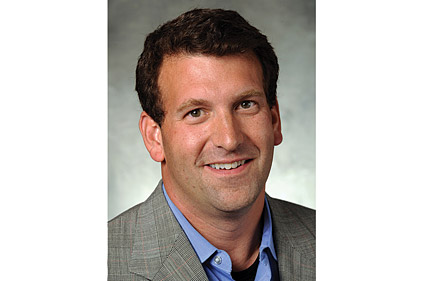“You’re so right,” said the grey-haired man wearing a white long-sleeve button-down shirt with his logo on the pocket. “I can’t push my guys any harder to get their work done.”
The balding man in a blue v-necked golf pullover with his logo on the front looked at me. “You’re saying we’ve got to get our guys pulling the company forward, right?”
“It’s worked for me,” I said. “My business is up 20 to 30 percent each year. The key is how you incentivize your people. If they’re paid hourly, they have no reason to get the job done quickly. But if you pay them by the job, they’re not only incentivized to finish that job on time, they’re incentivized to do more jobs during their work week.”
“Got it,” white button-down agreed. “Push leads to pull and pull leads to profits.”
“But,” said the man with a neatly trimmed goatee, wearing a red polo shirt and a frown, “you’re saying that we owners could wreck that?”
“It’s true,” I admitted. “You have to have the power of your convictions, and you have to understand the difference between conventional thinking and sound thinking.”
Blue golf pullover snorted, “Heck, you had me worried for a minute. Nothing tough there.”
“Don’t be so sure,” I warned him. “We’re talking about change, and no organization likes change. A lot of your techs will say, ‘This isn’t what we signed up for, we’re outta here.’ To counter that, you need to have a plan for where you see the organization in one, three, and five years. You need to believe in that plan so much that your staff buys into it.”
Red polo looked confused. “What does conventional and sound thinking have to do with that?” he asked.
“Well,” I told them, “the conventional thinking on organizational change is: ‘Keep both hands on the wheel. Know where you’re going. Don’t let the company veer off course.’”
“How’s that bad?” white button-down asked.
“Once again, you’re pushing. You’re working hard to make sure everyone is doing what they should. Sound thinking, on the other hand, says you want to find who has the true grit to ‘pull’ the company forward. The only way you can do that is by letting go and watching what happens. Letting people fail is tough to do.”
“Probably piss off a heck of a lot of customers, too,” blue golf pullover said.
“Might. Unless, as part of your organizational plan, you build in ways to deepen your relationship with your customers. That means you need to organize every facet of your company to deliver a positive customer experience. Let’s start with your techs. Conventional thinking says they only do service. Sound thinking says they’re relationship builders. If you look at your techs as adding value to the relationship, you have a way to not only deepen the relationship, but also increase profits. It’s a fairly simple equation: R + or – V = $
“The more value you add or subtract from the relationship determines whether your customer ticket goes north or south.”
“Mine’s been going south for a while,” red polo muttered.
“Strengthening those customer relationships is the way to build back revenues,” I encouraged him. “But this is another place where conventional thinking can get you in trouble.”
“How?” blue golf pullover asked.
“Conventional wisdom says revenues are measured by what happens during the year. Sound thinking says the real way to measure revenue is over the life of the relationship. Which in our case is 12-to-15 years.” I glanced at each of them in turn. “Every company wants to be that trusted source. This is the way you get there — by adding value to the relationship. Customers need to be confident that you’re recommending in their best interest.”
“And we’re supposed to put all this in our organizational plan?” white button-down asked.
“You bet. There’s no reason you have to do the same things the same way, year after year. If you put a plan together that moves you from push to pull and allows you to add value to your customer relationships, I’m confident your sales and profits will increase.”
Inside Your Head
Red polo shirt sipped his coffee. “Let’s get back to the thing that was troubling me. The part where you said we could wreck our own best efforts? How’s that going to happen?”
“Head trash,” I said simply.
“Excuse me,” blue golf pullover said. “Head trash?”
“That’s right. Remember when I said organizational change was hard? It’s going to be hardest on you. You’re going to be second-guessed, ridiculed behind your back. When that starts, you know what happens?”
They all looked at me expectantly.
“You’ll start doubting yourself. In your head you’ll be thinking: ‘I can’t do this. This isn’t a business you can change. What if this is a fiasco? If I lose any more people, I’m finished.’ That’s head trash. We all have it. And the insidious thing about head trash is that it can defeat you before you even get started. You have to cleanse all that from your mind. You can’t let it interfere with your plan to go from push to pull to profit.”
White button-down chuckled. “So you’re saying I’m my own worst enemy?”
“You have the power to muck things up, sure, but you also have the power to turn your traditional company into a company of choice — the place employees want to work and the place consumers want to handle their service work. Trust me,” I finished, “move your traditional business from push to pull, and you’ll have it thriving.”
Red polo grinned. “Company of choice. I like that.”
Handshakes and thanks all around. Those guys are going to do great.
For more information, visit www.apollohomecomfort.com.
Publication date: 12/10/2012


Report Abusive Comment